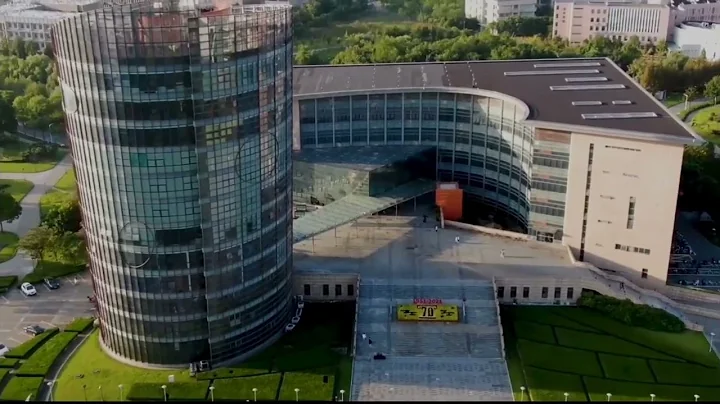reporters learned from East China Normal University that for the first time, Chinese researchers used DNA to construct a convolutional artificial neural network in test tube . This is also the largest and most complex artificial chemical molecular intelligent reaction network to date.
is an ultra-large-scale test tube DNA neural network with sparse topological connectivity completed by the team of Professor Pei Hao and Associate Professor Zhu Tong of the School of Chemistry and Molecular Engineering of East China Normal University. It can directly process complex biomolecule information and has the ability to handle 32 types of Molecular map information classification capabilities. The result, titled "Molecular Convolutional Neural Network Based on DNA Regulatory Circuits", was published in "Nature Machine Intelligence" on July 4, 2022.

How the "Most Powerful Brain" Created a Liquid DNA Computer
As the most intelligent living organ, the human brain has incredible information processing capabilities. This powerful ability comes from the complex links between millions of neurons in the brain. This precision The neural network composed of fast connections can be called the most powerful biological computer in the world.
There is a view that before the evolution of neuron-based brains, a network of interacting molecular reactions provided single-celled life (such as bacteria) with "intelligent" behavior to adapt to the environment and survive. In the real world, a related and compelling challenge exists in the field of bioengineering : demonstrating how to harness synthetic biomolecular reaction networks to support limited forms of intelligent behavior, similar to what must have preceded the evolution of the neural brain.
As early as 1994, Turing Award winner Leonard Adleman used DNA molecules as computing carriers to calculate Hamiltonian path problems, creating the field of DNA computer . The
DNA computer is a biological computer that is composed of a series of biological molecules in a solution form. It performs highly parallel calculations through biochemical reactions to achieve rapid processing of molecular information. Some people call it a "liquid computer."
Compared with traditional silicon-based computers that can only process symbolic information, DNA computers can synchronize scientific measurements (perception information) and chemical reactions, and directly detect and perceive molecular characteristic information in life activities. Ordinary medical tests can only measure a small number of biomolecules. If large-scale biomolecule circuits are used, it will be possible to perform diagnostic tests on hundreds of biomolecules at the same time and achieve analysis and diagnosis directly in chemical and biological environments.
is based on the DNA molecular chain replacement reaction mechanism. Researchers have realized the construction of a DNA computer with multiple computing functions including Boolean logic calculations, simulation calculations, and neural network calculations. However, how to expand the scale and complexity of molecular reaction systems and build artificial molecular reaction networks with more powerful computing power is still extremely challenging.

Pei Hao’s team from the School of Chemistry and Molecular Engineering of East China Normal University and Associate Professor Zhu Tong
Test tube molecules Artificial intelligence Realizes Chinese oracle bone character recognition
Every update of the main components of electronic computers (from electron tubes to very large scale integrated circuits) is used All aspects of computer performance have been greatly improved and enhanced. Following this history, Professor Pei Hao's team has been committed to the design and development of nucleic acid molecular devices, and proposed a new DNA strand displacement reaction mechanism based on allosteric regulation (ACS Nano, 2018, 12, 7093), realizing nucleic acid molecular circuits The thermodynamics and kinetic fine control and non-linear functional design have achieved highly sensitive and highly selective intelligent biological detection of important target molecules related to various diseases in vivo and in vitro.

DNA convolutional neural network is used to recognize Chinese oracle bone characters
Based on the research foundation in nucleic acid chemistry, oriented to the cross-integration development of analytical chemistry, computer science and molecular biology, the research team aims to develop ultra-large-scale DNA molecular reaction networks Key scientific problems, in cooperation with Zhu Tong's research group, who has long been engaged in artificial intelligence and molecular scientific research, established a systematic implementation strategy for DNA convolutional neural networks, using the molecular switch gate architecture as the basic circuit component, and adjusting the area and recognition based on weights The modularization of regional functions enables independent regulation of signal transmission functions and weight assignment functions to achieve weight sharing. Experimental results show that this strategy can successfully implement a variety of mathematical operations.
is based on a cascade combination of multiple modular molecular computing units. The research team constructed a large-scale DNA neural network that contains 512 molecular species, involves thousands of chemical reactions, can produce hundreds of molecular products, and can achieve 32 categories of 144-bit molecular pattern identification and classification.
In order to verify the capabilities of DNA neural networks, the research team chose a classic challenge of electronic artificial neural networks - handwriting recognition as the task. The convolutional neural network constructed from DNA molecules performs prescribed chemical reactions to complete the classification of 4 languages and 32 types of handwritten characters, including Chinese oracle bone characters (fire, earth, wood, water, sky, air, human, Classification and identification of students. The accurate identification of "molecular handwriting" fully demonstrates that the constructed DNA neural network has powerful molecular map information processing capabilities and is expected to be further applied in the fields of intelligent biosensing and drug delivery.
Dr. Xiong Xiewei and Associate Professor Zhu Tong are the co-first authors of the paper. Professor Zhu Tong’s research group is responsible for the design and optimization of the convolution calculation model, and Professor Pei Hao is the corresponding contact person.
Author: Xu Qimin
Picture:
provided by the respondent




















